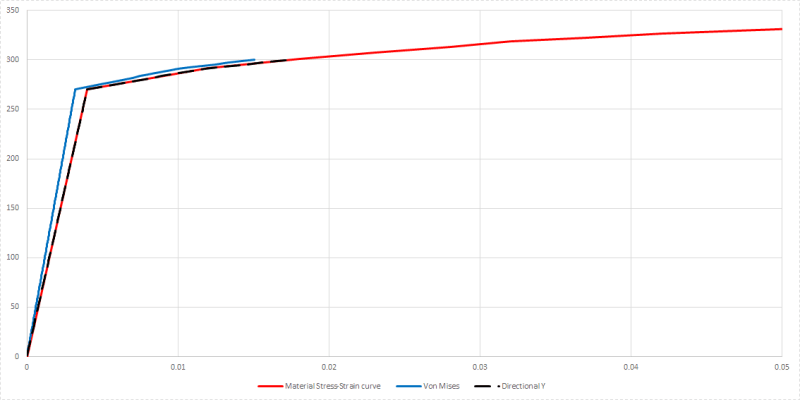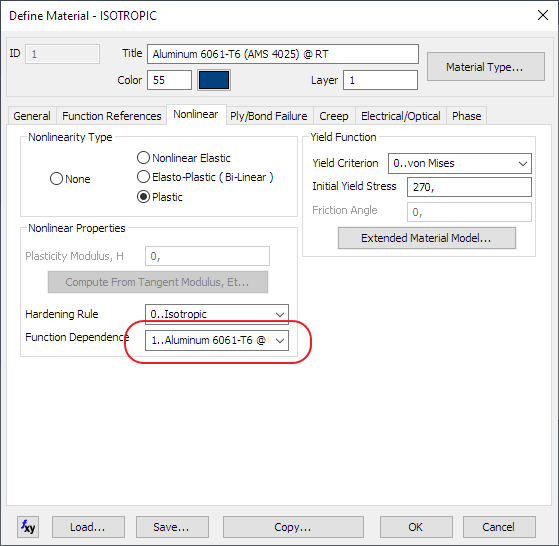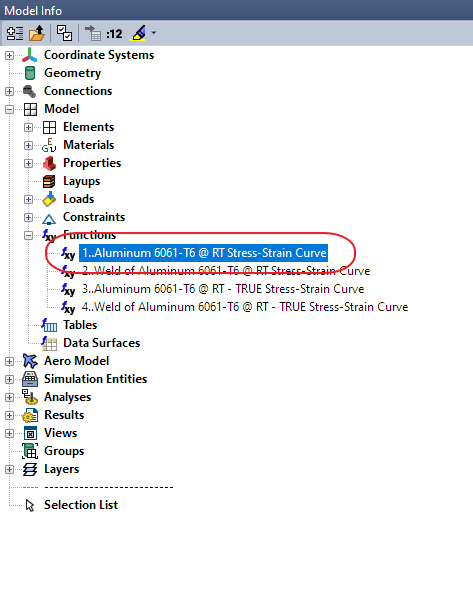Hello,
I hope you are doing well.
I am doing a burst analysis of a vessel. Consequently, NL material has to be introduced. Hence, I introduced the stress-strain curve and selected the Plasticity NL option. I followed what the NX Nastran's manual says :
The first point of the curve is (0,0)
The second is the strain at yield stress and the yield stress respectively.
However, when I see the results, I don't retrieve the same stress-strain curve that I put on the input. Even the Young's modulus is not respected in the linear zone (I also checked that the Young's modulus that I introduced is the same that the calculated with the second point of the curve).
The vessel contains a welding and I am looking to obtain the stress-strain curve at this area, which is the rupture zone.
I have tried plotting :
Nonlinear Top Major Strain vs Top VM Stress
Nonlinear Top Major Strain vs Top Major Stress
Nonlinear VM Strain vs Top VM Stress (I know that VM Strain makes no sense, but MAYBE Nastran was doing something weird)
but the results are not correct.
I did a small tensile test (couple of elements in line with a tensile load) and I obtain the exact same stress-strain curve that I introduced as input.
I leave the file attached if you want to take a look at it.
Thanks in advance !
Cordially,
EC
I hope you are doing well.
I am doing a burst analysis of a vessel. Consequently, NL material has to be introduced. Hence, I introduced the stress-strain curve and selected the Plasticity NL option. I followed what the NX Nastran's manual says :
The first point of the curve is (0,0)
The second is the strain at yield stress and the yield stress respectively.
However, when I see the results, I don't retrieve the same stress-strain curve that I put on the input. Even the Young's modulus is not respected in the linear zone (I also checked that the Young's modulus that I introduced is the same that the calculated with the second point of the curve).
The vessel contains a welding and I am looking to obtain the stress-strain curve at this area, which is the rupture zone.
I have tried plotting :
Nonlinear Top Major Strain vs Top VM Stress
Nonlinear Top Major Strain vs Top Major Stress
Nonlinear VM Strain vs Top VM Stress (I know that VM Strain makes no sense, but MAYBE Nastran was doing something weird)
but the results are not correct.
I did a small tensile test (couple of elements in line with a tensile load) and I obtain the exact same stress-strain curve that I introduced as input.
I leave the file attached if you want to take a look at it.
Thanks in advance !
Cordially,
EC




